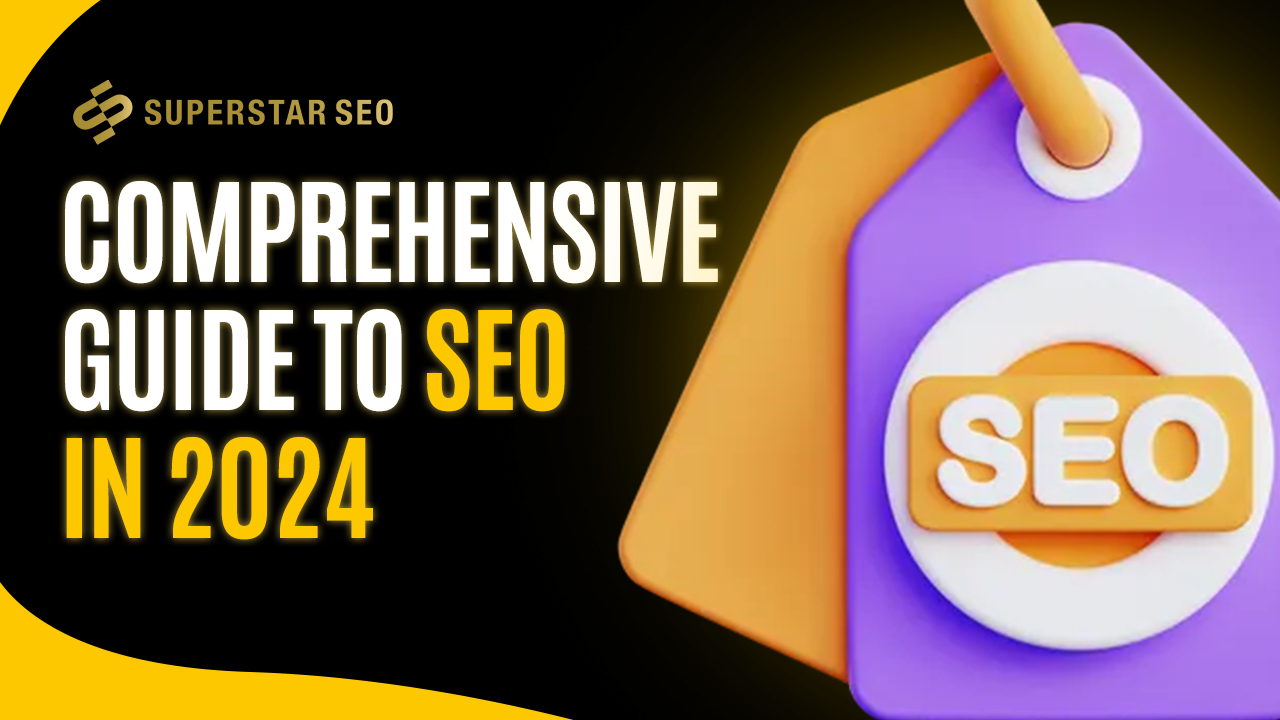What Is the Difference Between Organic and Paid Results?
The distinction between organic and paid results is a pivotal factor that shapes the user experience. Understanding this difference is crucial for both marketers and users navigating the vast landscape of search engine results pages (SERPs). Comprehensive SEO solutions are our specialty at our Digital Marketing Agency. We use cutting-edge methods to maximize online visibility and generate organic traffic for our clients. Our dedication to achieving quantifiable outcomes and guaranteeing our clients’ digital triumph extends to our strategic keyword analysis and on-page and off-page optimization services.
Organic results are the listings that appear naturally on the SERP, ranked based on the search engine’s algorithmic assessment of relevance to the user’s query. These results are not influenced by any payment and are essentially a merit-based display of web pages that the search engine deems most pertinent to the user’s search terms. They are the product of effective search engine optimization (SEO) strategies, where website owners optimize their content, meta tags, and overall site structure to align with search engine algorithms.
On the other hand, paid results, as the name suggests, are advertisements that businesses or individuals pay for to appear prominently on the SERP. These listings are marked as ads and are usually positioned at the top or bottom of the page. Unlike organic results, paid results provide an immediate visibility boost for advertisers, allowing them to reach their target audience more efficiently. The position of these results is determined by a bidding system, where advertisers bid on keywords to compete for ad placements.
When users interact with organic results, they are engaging with quality content that has earned its place through relevance and quality. The organic search process relies on the intricate dance between search algorithms and SEO-optimized content, ensuring that users receive the most valuable and authoritative information for their queries.
Businesses leverage financial investments to secure prominent placements and immediate visibility. This approach enables advertisers to strategically position themselves at the forefront of user searches, targeting specific keywords to reach their desired audience and drive organic traffic to their websites.
While organic results showcase the importance of high-quality content and SEO efforts, paid results highlight the impact of strategic advertising investments in the competitive digital landscape. Both play distinct roles in shaping the online experience, providing users with a diverse array of information and businesses with versatile avenues for reaching their target audience.
Exploring the nuances of search engine optimization (SEO) involves delving into several key concepts, including keyword frequency, keyword density, keyword placement, keyword difficulty, and keyword proximity. Each of these terms plays a distinctive role in the realm of SEO, influencing how content is perceived and ranked by search engines.

Understanding Keyword Frequency and Density
Keyword frequency refers to the number of times a particular keyword appears within a piece of content. Striking the right balance is essential; too few instances may result in diminished relevance, while excessive repetition can lead to keyword stuffing, potentially harming the content’s credibility. Keyword density, on the other hand, is the ratio of the targeted keyword’s occurrence to the overall word count, offering insights into the content’s focus and thematic relevance.
Keyword difficulty measures the competitiveness of a specific KW in the online landscape. This metric considers factors such as the number of existing competing pages and the authority of those pages. High keyword difficulty suggests a more challenging environment for achieving a higher ranking. Strategizing around KW difficulty involves identifying less competitive KW’s that still align with the content’s objectives.
Meanwhile, keyword proximity examines the spatial relationship between the words within targeted keyword phrases. It assesses how close the individual words are to each other, emphasizing the impact of context on search engine interpretation. Creating content with thoughtful keyword proximity ensures that the intended meaning is clear to both users and search algorithms, contributing to better overall SEO performance.
The Essence of Keyword Stemming
Keyword stemming, a linguistic phenomenon at the heart of search engine optimization (SEO), encapsulates the strategic art of broadening a keyword’s reach by considering its root or base form. In the intricate dance of language, words often share common roots, and keyword stemming leverages this linguistic kinship to optimize content for a wider range of search queries.
As individuals express their queries in varied forms, keyword stemming allows content creators to cast a wider net, ensuring that the content remains relevant and discoverable across diverse linguistic nuances. This adaptive approach resonates with the fluidity of user language, accommodating different grammatical forms and derivatives to enhance search visibility. By incorporating stemmed variations of keywords, content creators can enrich their material, catering to the diverse ways users express intent in search queries.
Keyword stemming aligns with search engine algorithms that increasingly prioritize semantic understanding. As search engines evolve to comprehend context and intent, the incorporation of stemmed keywords becomes a potent tool for signaling relevance and depth of content. This nuanced approach not only enhances search engine rankings but also reflects a user-centric strategy that anticipates and accommodates the varied ways individuals articulate their queries.
Digital Marketing Agency can create a digital presence that not only adjusts to the subtleties of user language but also works in unison with search engines’ constantly changing algorithms by identifying and utilizing the connections that naturally exist between words. As a result, keyword stemming becomes apparent as a dynamic and crucial component of the effective SEO strategy, influencing how search engines and users alike respond to content.
Definition of Long Tail Keywords
Long tail keywords refer to highly specific and niche phrases that users input into search engines. Unlike broad, generic keywords, long tail keywords are characterized by their specificity, often consisting of three or more words. This specificity tailors the search intent more precisely, reflecting the nuanced nature of users’ queries.
As users seek more detailed and specific information, the use of long tail keywords allows content creators to align their offerings with these nuanced queries. This results in a more refined and targeted approach to content creation, ensuring that the content presented to users directly addresses their specific needs and interests.
Understanding the essence of long tail keywords goes beyond mere semantics. It embodies a strategic shift in how businesses approach online visibility. Long tail keywords may have lower search volumes compared to broader terms, but they boast a higher level of relevance and conversion potential. Businesses that harness the power of long tail keywords can tap into a more engaged audience, one that is actively seeking specialized information and solutions.
Competition for long tail keywords is often less fierce than for generic terms, providing businesses with an opportunity to carve out a niche and establish authority within a specific domain. This strategic advantage is particularly valuable for small businesses or those operating in niche markets, allowing them to compete effectively and connect with a more qualified audience.
Essentially, a long tail keyword’s definition goes beyond its literal meaning. It represents a strategic and nuanced approach to SEO that takes into account how user behavior and search engine algorithms are changing over time. Using long tail keywords for SEO becomes an effective strategy for accuracy, relevancy, and eventually online success as companies compete for attention in a crowded digital market.

Significance of Anchor Text in SEO
Anchor text refers to the clickable, hyperlinked text within a webpage that directs users to another page, either within the same site or externally. This seemingly modest element plays a profound role in shaping the way search engines interpret and rank content.
Anchor text serves as a navigational guide, providing users and search engine algorithms with cues about the destination page’s content. It is a textual roadmap that not only influences user experience but also signals the relevance and context of the linked content to search engines. The strategic use of anchor text aligns closely with the overarching goal of SEO: to enhance the visibility and accessibility of content in response to user queries.
Effective anchor text optimization involves the judicious selection of keywords or phrases that encapsulate the essence of the linked content. This strategic alignment enhances the contextual understanding of search engine algorithms, contributing to improved search rankings for the linked page.
Anchor text optimization becomes a nuanced art when considering diversity. A varied and natural distribution of anchor text types, including branded, generic, and keyword-rich variations, contributes to a more organic and credible link profile. Balancing the anchor text composition helps mitigate the risk of over-optimization and ensures a holistic approach that resonates with both users and search engines.
Harmonizing Page Speed with Search Engine Algorithms
Page speed, the time it takes for a web page to load fully, is a critical metric that profoundly influences the user experience in the digital realm. Beyond being a mere technical parameter, page speed serves as the gateway to user satisfaction and engagement. It encapsulates the duration between a user clicking a link and the content becoming fully accessible, shaping the overall impression of a website.
Understanding the user-centric significance of page speed requires recognizing its direct impact on bounce rates and user retention. In a landscape where attention spans are fleeting, a slow-loading page risks losing the interest of visitors who seek instant gratification. A swift page speed not only enhances user satisfaction but also aligns with the broader goals of search engines that prioritize delivering a seamless and efficient user experience. Page speed’s impact on SEO underscores its importance for optimizing website performance and search engine rankings.
Search engines, cognizant of user behavior patterns, factor in page speed as a crucial ranking criterion. Websites with faster loading times are favored in search engine results, contributing to improved visibility and discoverability. This symbiotic relationship between page speed and search engine algorithms underscores the integral role that speed plays in the broader SEO strategy.
The mobile era amplifies the significance of page speed. As a growing majority of users access the web through mobile devices, the need for swift and responsive web pages becomes paramount. Mobile-friendly websites, coupled with rapid page loading, not only satisfy user expectations but also align with the mobile-first indexing approach adopted by search engines, further influencing website rankings.
Content Marketing and SEO
Utilizing content marketing for SEO isn’t merely a tactical choice; it is a strategic imperative that transcends traditional approaches. The art lies in seamlessly weaving compelling narratives and valuable information into the fabric of a website, aligning content with both user intent and the nuanced algorithms of search engines.
The creation of high-quality, relevant, and shareable content serves as the cornerstone of a successful SEO campaign by Digital Marketing Agency. When users find value in the content, they are more likely to engage, share, and link to it—activities that signal credibility to search engines. This virtuous cycle enhances the website’s authority, contributing to improved rankings and visibility in search engine results pages (SERPs).
While keywords remain crucial, a holistic approach involves addressing the broader context of user needs and search intent. Content creators must strive to understand their audience, anticipate their queries, and provide comprehensive answers that go beyond mere keyword matching. This user-centric approach not only aligns with evolving search engine algorithms but also fosters genuine connections with the audience, establishing the website as a go-to resource in its niche.
Keep an Eye on Algorithm Updates and Core Web Vitals
Core Web Vitals are a set of metrics that measure a website’s speed, interactivity, and visual stability. These directly impact user experience, which Google now prioritizes highly when ranking websites. So, how do you stay afloat? Embrace a user-centric approach. Optimize your website for mobile responsiveness, minimize page load times, and eliminate layout shifts that frustrate users.
Remember, algorithm updates aren’t meant to punish websites. They’re designed to deliver the best possible search experience. By focusing on Google Core Web Vitals and consistently providing high-quality content, you’ll not only weather the waves of change but also position your website for long-term success in the ever-evolving digital sea.
This approach keeps you agile, ready to adapt to future updates while ensuring a positive user experience – the true north star of SEO. So, stay informed, prioritize user needs, and embrace the journey. Remember, a smooth-sailing website is a happy website, and happy websites thrive in any SEO climate.
Voice Search Optimization
In today’s digital world, voice search optimization has become a game-changer, driven by the soaring popularity of voice-activated gadgets and virtual assistants. It’s no longer just about typing into a search bar; now, users simply ask questions aloud, expecting instant and accurate answers. This shift has forced businesses to rethink their SEO strategies to ensure they’re primed for voice searches.
One of the big changes is in how conversations happen between users and devices. Thanks to advancements in Natural Language Processing (NLP), interactions feel more human-like. This means understanding the nuances of how people talk and tailoring content to match those conversational patterns. It’s like adapting your website to speak the language of your customers, quite literally.
Google’s updates, such as BERT and MUM, are further nudging us in this direction, emphasizing the need for content that’s not just stuffed with keywords but actually answers questions comprehensively. It’s about being the one-stop-shop for information, providing clear and concise responses that satisfy user queries in one fell swoop. And with tools like Google Search Console, businesses can track how well they are performing in voice searches and fine-tune their strategies accordingly.
Local SEO Strategy
Local SEO continues to play a pivotal role in the ever-evolving SEO landscape, particularly for businesses targeting specific geographic areas. Structured data and schema markup remain essential tools for optimizing local search results, ensuring that businesses appear prominently in relevant Google search results. With the increasing prevalence of mobile search, local SEO becomes even more crucial, as users often seek nearby businesses while on the go.
To gauge their local search visibility, businesses can conduct quick incognito searches to see how their site appears in local search results. Ensuring that accurate business information, including name, address, and phone number, is included is paramount, as this is a significant ranking factor for local SEO. Additionally, maintaining a robust business listing, such as Google My Business, and actively managing reviews are essential for enhancing local search presence.
As SEO trends continue to evolve, local searches are becoming increasingly prominent, with users frequently seeking nearby businesses for products and services. By optimizing for local SEO, businesses can enhance their visibility in local search results, driving more foot traffic and online conversions. Leveraging SEO tools and staying abreast of emerging trends are key strategies for maximizing local search performance and maintaining a competitive edge in 2024.
Conclusion
Combining SEO with content marketing is becoming a powerful tactic that breaks through traditional limits. The foundation for long-term online success is laid by the interaction between creating valuable, user-centric content and optimizing it for search engines. Acknowledging the mutually beneficial association between these two fundamental elements enables enterprises to skillfully maneuver through the constantly changing digital terrain, crafting a digital presence that appeals to both search engines and consumers. Utilizing content marketing for SEO is still a dynamic and essential strategy as the digital ecosystem develops, ensuring that relevance and visibility coexist in the cutthroat online space.





